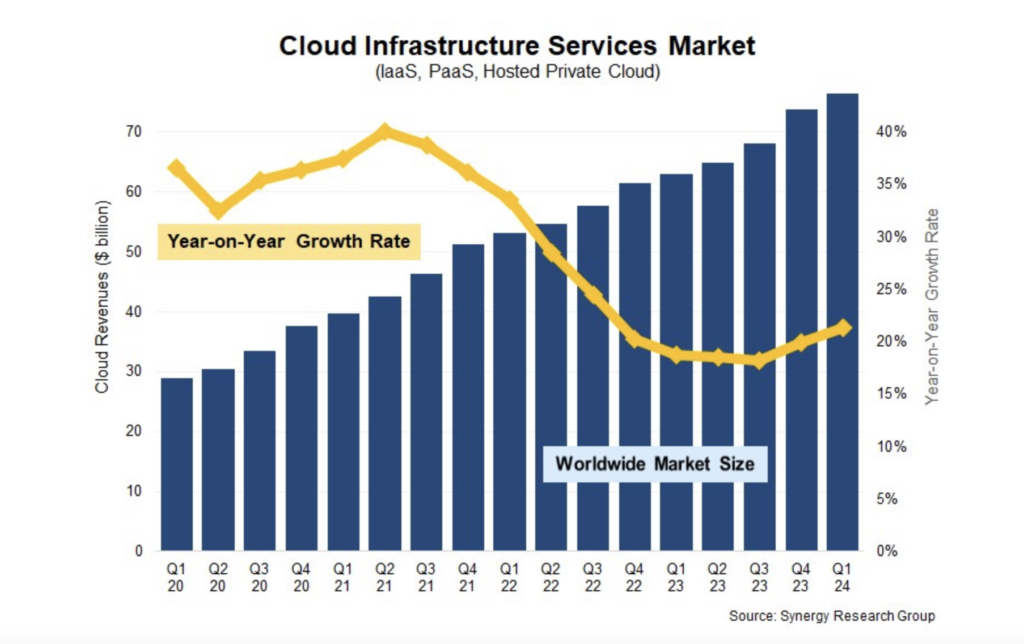History
EC2 was launched by Amazon Web Services (AWS) in 2006. It was one of the first services to offer on-demand computing resources, revolutionizing how businesses manage IT infrastructure. Over the years, EC2 has evolved, adding various instance types, storage options, and networking capabilities to meet diverse needs.
Value proposition
EC2 offers several key benefits:
- Scalability: Users can scale resources up or down based on demand. EC2 supports auto-scaling, enabling applications to automatically adjust capacity to maintain performance while minimizing costs.
- Cost efficiency: EC2’s pay-as-you-go pricing model ensures that users only pay for the compute time they use. This eliminates the need for large upfront investments in hardware and reduces ongoing maintenance costs.
- Flexibility: EC2 offers a wide variety of instance types optimized for different use cases, such as compute-intensive, memory-intensive, and storage-optimized applications. This flexibility allows users to choose the best configuration for their needs.
- Global reach: EC2 is available in multiple AWS regions and availability zones around the world. This geographic diversity helps reduce latency and improve redundancy, ensuring high availability and reliability.
- Integration: EC2 seamlessly integrates with other AWS services, such as Amazon S3 for storage, Amazon RDS for databases, and AWS Lambda for serverless computing. This integration simplifies the development and deployment of complex applications.
Challenges
While EC2 provides numerous advantages, there are also challenges:
- Cost management: Without proper monitoring and cost management strategies, EC2 usage can lead to unexpected expenses. It’s crucial to implement tools like AWS Cost Explorer and set up billing alerts to avoid overspending.
- Complexity: Managing various configurations and optimizing performance requires a deep understanding of EC2 features and best practices. Users need to stay updated with AWS’s frequent service updates and enhancements.
- Security: Ensuring data security and compliance in a shared cloud environment can be challenging. Users must implement robust security practices, such as configuring security groups, using IAM roles, and encrypting data both in transit and at rest.
- Performance variability: EC2 instances may experience performance variations depending on AWS’s load and the specific instance type used. It’s important to select the right instance type and optimize application performance through proper tuning and monitoring.
- Network dependencies: EC2 instances rely on network connectivity for access and performance. Network issues or latency can impact application performance. Users should design their architecture to minimize network dependencies and use features like Elastic Load Balancing and Amazon CloudFront to improve performance and reliability.
Key features
Key features of EC2 include:
- Instance types: Various types optimized for different workloads.
- Elastic Block Store (EBS): Persistent block storage that can be attached to EC2 instances, providing reliable and scalable storage options.
- Elastic IP addresses: Static IP addresses that can be associated with EC2 instances, enabling dynamic cloud computing while maintaining a consistent IP address.
- Auto scaling: Automatically adjusts the number of instances based on demand, ensuring applications remain available and performant while optimizing costs.
- Security groups: Virtual firewalls that control inbound and outbound traffic to instances, allowing users to define rules based on IP protocol, port numbers, and source/destination IP addresses.
Types of EC2 instances
- General purpose: Balanced resources for a variety of workloads (e.g., t3, m5).
- Compute optimized: High-performance processors for compute-intensive tasks (e.g., c5).
- Memory optimized: High memory capacity for memory-intensive applications (e.g., r5).
- Storage optimized: High disk throughput and IOPS for data-intensive applications (e.g., i3).
- GPU instances: Instances with GPUs for graphics-intensive applications and machine learning (e.g., p3).
Market
EC2 continues to be a cornerstone of AWS’s cloud offerings, widely adopted across various industries. The demand for flexible and scalable computing solutions drives the market, with businesses of all sizes leveraging EC2 to optimize their IT operations and reduce infrastructure costs. According to a report by Synergy Research Group, the global cloud market experienced significant growth, with AWS maintaining a dominant position with a 32% market share. Other major cloud providers offering similar products include Microsoft Azure, with a 23% market share, and Google Cloud, with approximately 10%. This growth reflects the increasing reliance on cloud services for business operations and innovation.
For more details, see the full report: Synergy Research Group.

On-demand use cases
EC2 is particularly useful for various scenarios:
- Web hosting: Hosting websites and web applications.
- Big data processing: Running data analytics and processing large datasets.
- Development and testing: Provisioning development and test environments quickly.
- Disaster recovery: Setting up disaster recovery environments.
- Machine learning: Training and deploying machine learning models.
References
- Amazon EC2
- AWS EC2 documentation
- AWS pricing
- Fortune Business Insights on Cloud Computing Market
- Gartner Public Cloud Services Forecast
Further reading
- “Amazon Web Services in Action” by Andreas Wittig and Michael Wittig: An in-depth guide to using AWS, including EC2.
- “AWS Certified Solutions Architect Official Study Guide” by Joe Baron, Hisham Baz, Tim Bixler, et al.: Comprehensive coverage of AWS services, including EC2.
- “Cloud Computing: Concepts, Technology & Architecture” by Thomas Erl, Zaigham Mahmood, and Ricardo Puttini: A detailed exploration of cloud computing principles, including EC2.
Videos
- “AWS On-Demand Instances Explained” by AWS: An official AWS video explaining how on-demand instances work and their benefits. Available on YouTube.
- “Optimizing AWS Costs with On-Demand Instances” by A Cloud Guru: A detailed video on cost optimization strategies using AWS on-demand instances. Available on YouTube.
- “Understanding Cloud Pricing Models” by Google Cloud Platform: This video covers various cloud pricing models, including on-demand instances. Available on YouTube.



